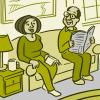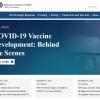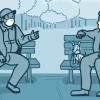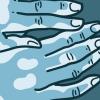Search

Coping With Caregiving
It can be a labor of love, and sometimes a job of necessity. A total of about 43 million U.S. adults provide unpaid care for someone with a serious health condition each year. These often-unsung heroes provide hours of assistance to others. Yet the stress and strain of caregiving can take a toll on their own health. NIH-funded researchers are working to understand the risks these caregivers face…

Treating Hearing Loss to Help Brain Health
More than 6 million people in the U.S. are living with dementia. The condition causes loss of thinking abilities, memory, and other cognitive skills. Safe and affordable ways to prevent or slow the age-related loss of brain health are greatly needed. Past studies have linked hearing loss to the development of dementia. So, treating hearing loss may be a way to slow or prevent brain problems. A…

What is Palliative Care?
Palliative care is a specialized type of medical care for people who have a serious or life-threatening illness. It can help relieve pain, discomfort, stress, and other symptoms. It aims to improve quality of life when a person is seriously ill. You may receive palliative care while getting treatment for a serious illness. It can help you deal with side effects of medical treatments. You might…

Chocolate Health Claims
Love chocolate? Most of us do. It’s a delicious treat. Or a quick pick-me-up after a long day. You may have heard that dark chocolate has health benefits. But is that true or just wishful thinking? Small studies suggest that cocoa, an ingredient in chocolate, may have health benefits. It’s possible that certain nutrients in cocoa could improve heart health and boost brain function, especially in…

Financial Problems Can Be Sign of Dementia
A new study found that financial problems can be an early sign of dementia. Some older adults had such problems years before being diagnosed with Alzheimer’s disease or a related condition. Dementia causes changes to the brain that can interfere with daily life. These includes the ability to manage bills and other finances. Researchers looked at when these problems begin. The team examined…

Eating Plan for a Healthy Heart
What you choose to eat can affect your heart health. Eating well can be confusing with all the diet information out there. The DASH food plan—Dietary Approaches to Stop Hypertension —is supported by NIH research. It’s a flexible and balanced eating plan designed to improve the health of your heart, especially if you have high blood pressure (hypertension). Following the DASH food plan doesn’t…

NIH COVID-19 Research
Learn about COVID-19 research at NIH. Read about the vaccines, treatments, and testing that are now available. Explore NIH-funded research by state. You can also find information about how to join clinical trials.

Understanding COVID-19
COVID-19 has claimed millions of lives around the world. But we learn more about this disease every day. Scientists are developing tools that promise to slow and eventually help us overcome the pandemic. COVID-19 is caused by a new coronavirus called SARS-CoV-2. There are many types of coronaviruses. Some cause the common cold. Others have led to fatal disease outbreaks. These include severe…, Protecting Yourself, You’re most likely to get COVID-19 through close contact with someone who’s infected. Coughing, sneezing, talking, and breathing produce small droplets of liquid. These are called respiratory droplets. They travel through the air and can be inhaled by someone else. “COVID-19 is spread mainly through exposure to respiratory droplets that tend to drop within six feet,” says Dr. Anthony Fauci,…, What to Look For, Common symptoms of COVID-19 include fever, cough, headaches, fatigue, and muscle or body aches. People with COVID-19 may also lose their sense of smell or taste. Symptoms usually appear two to 14 days after being exposed to the virus. But even people who don’t seem sick can still infect others. The CDC estimates that 50% of infections are spread by people with no symptoms. While some with this…, Getting Treatment, Better COVID-19 treatments mean that fewer people now get severely sick if they catch the virus. Scientists have been working to test available drugs against the virus. They’ve found at least two that can help people who are hospitalized with the virus. A drug called remdesivir can reduce the time a patient spends in the hospital. A steroid called dexamethasone helps stop the [qtip:immune system|…, A Shot of Hope: Vaccines, It used to take a decade or more to develop a new vaccine. In this pandemic, scientists created COVID-19 vaccines in less than a year. The first two vaccines approved for emergency use are from Moderna and Pfizer/BioNTech. Moderna’s vaccine was co-developed with NIH scientists. Both are a new type of vaccine called mRNA vaccines. mRNA carries the genetic information for your body to make proteins…

Patchy Skin
Your skin is often the first thing other people see. You may have noticed that some people have patches of white skin. This discoloring is called vitiligo. Vitiligo isn’t contagious. It’s an autoimmune disease. That’s a condition in which the body’s immune system mistakenly attacks and destroys the body’s own cells. Normally, your immune system defends your body from germs. But in vitiligo,…

How Long Does Protection Last After COVID-19?
After your body’s disease defense system (the immune system) fights off a virus, it keeps a memory of it. A study suggests that people’s immune systems remember COVID-19 for months after recovery. The immune system makes different types of cells and molecules to fight disease. These include antibodies, T cells, and B cells. Researchers looked at immune responses from about 200 people who’d…
NIH Office of Communications and Public Liaison
Health and Science Publications Branch
Building 31, Room 5B52
Bethesda, MD 20892-2094
Contact Us:
nihnewsinhealth@od.nih.gov
Phone: 301-451-8224
Share Our Materials: Reprint our articles and illustrations in your own publication. Our material is not copyrighted. Please acknowledge NIH News in Health as the source and send us a copy.
For more consumer health news and information, visit health.nih.gov.
For wellness toolkits, visit www.nih.gov/wellnesstoolkits.
